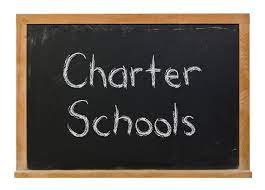In the ongoing discourse surrounding educational institutions, the spotlight often falls on public and private schools, but what about charter schools? Charter schools share similarities with public schools, both being publicly funded entities offering free education. However, the distinction lies in the degree of autonomy they enjoy; charter schools operate with more independence than their traditional public counterparts.
The merits of charter schools are noteworthy. With smaller class sizes, students benefit from enhanced teacher-student relationships, fostering one-on-one learning opportunities. These schools embrace diverse and non-traditional teaching methods, providing individualized learning experiences that cater to students’ unique strengths. Furthermore, charter schools actively promote parental involvement, conducting more frequent parent conferences compared to public schools, all with the ultimate goal of ensuring student success and graduation.
Yet, these advantages come with their own set of challenges. Notably, charter schools typically do not provide bus transportation for students, a potential deal-breaker for parents facing transportation constraints. The absence of such services may prompt students to rely on city buses, raising safety concerns for parents. Additionally, sports programs and teacher contracts vary due to differences in funding, impacting the overall school environment and student experiences.
In contemplating enrollment in a charter school, it becomes imperative to acknowledge these drawbacks. The primary stakeholder in this decision-making process is the student, as they are the ones attending the school. To gain insights into student life within charter schools, I conducted an interview with a current student. Questions about transportation revealed, “No, they don’t provide it. I drive to and from school every day.” The student’s schedule aligns well with work hours, and classes, with around 20 students, offer a more intimate setting. Despite initial hesitations about school, the student values the shorter hours, allowing for increased work hours.
The interview highlighted that a traditional seven-hour school day might not be suitable for every student. Some prefer a focused approach, completing necessary work efficiently to have the rest of the day to themselves. Considering the prevalence of part-time jobs among high school students, the traditional school schedule may conflict with work hours. A charter school could be a more fitting choice for those prioritizing practical work over a traditional school setting, enabling students to discover their unique learning paths for successful graduation.
Choosing a charter school allows individuals to tailor their learning experiences to align with their preferences. While the decision involves risks, it might just lead to a more fulfilling educational journey. Exploring alternatives such as charter schools opens the door to unexpected possibilities, and who knows, it might turn out to be a better fit than the conventional educational route.









